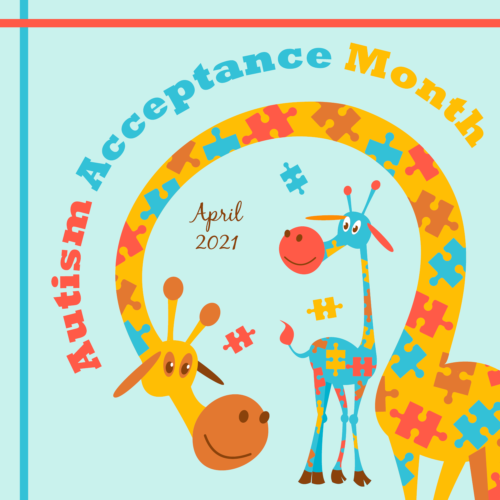April is Autism Acceptance Month

In 1970, the Autism Society launched an ongoing nationwide effort to promote autism awareness and assure that all affected by autism are able to achieve the highest quality of life possible. In 1972, the Autism Society launched the first annual National Autistic Children’s week, which then evolved into Autism Awareness Month (AAM).
This March, the Autism Society, along with leading disability organizations across the country, announced that it is formally shifting references of “Autism Awareness Month” to “Autism Acceptance Month.” The shift in the use of terminology aims to foster acceptance to ignite change through improved support and opportunities in education, employment, accessible housing, affordable health care and comprehensive long-term services.
Every year, one in 54 children are diagnosed with autism. Autism is a complex developmental disorder that affects a person’s ability to communicate and interact with others. Autism is unique in that it doesn’t affect individuals the same way every time. One of the most important things a parent or caregiver can do is learn the early signs of autism and become familiar with the typical developmental milestones that their child should be reaching.
What are the early signs of autism?
The autism diagnosis age and intensity of autism’s early signs vary widely. Some infants show hints in their first months. In others, behaviors become obvious as late as age 2 or 3. Not all children with autism show all the signs. Many children who don’t have autism show a few. That’s why professional evaluation is crucial.
If a child exhibits any of the following early signs of autism, a pediatrician or family doctor should be asked to give an evaluation right away. Research has shown that early detection and intervention can improve a child’s development.
By 6 months
- Few or no big smiles or other warm, joyful and engaging expressions
- Limited or no eye contact
By 9 months
- Little or no back-and-forth sharing of sounds, smiles or other facial expressions
By 12 months
- Little or no babbling
- Little or no back-and-forth gestures such as pointing, showing, reaching or waving
- Little or no response to name
By 16 months
- Very few or no words
By 24 months
- Very few or no meaningful, two-word phrases (not including imitating or repeating)
At any age
- Loss of previously acquired speech, babbling, or social skills
- Avoidance of eye contact
- Persistent preference for solitude
- Difficulty understanding other people’s feelings
- Delayed language development
- Persistent repetition of words or phrases (echolalia)
- Resistance to minor changes in routine or surroundings
- Restricted interests
- Repetitive behaviors (flapping, rocking, spinning, etc.)
- Unusual and intense reactions to sounds, smells, tastes, textures, lights and/or colors
CSSMCW’s pediatric therapy team, comprised of physical, occupational, and speech therapy, works with children who have a variety of impairments, including Autism Spectrum Disorder. Our pediatric therapists are a highly committed team whom work together to promote your child’s greatest potential and opportunity for growth. Call our Pediatric Therapy Team at 814-467-3465 to learn if your child can benefit from our integrative therapies.
